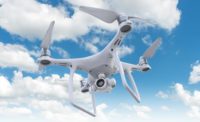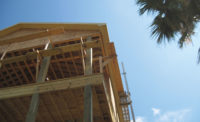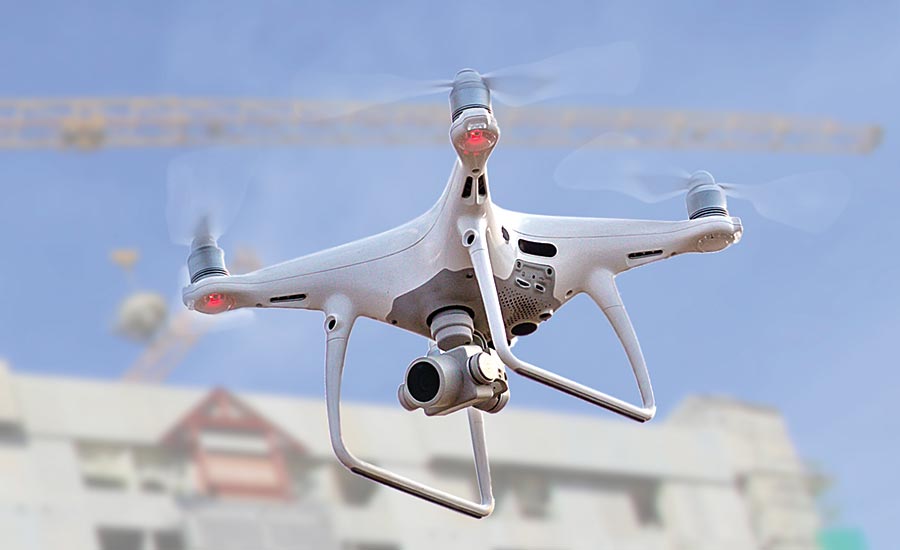Drones Are Upping Construction Site Safety
The eyes and ears construction workers didn’t know they needed.












Commercial drones are completely changing the way large-scale operations do business. They have been used to find efficiencies across a diverse swath of industries, from farming, to renewable energy, to conservation efforts. Nowhere has the impact of drones been more acutely felt than in the construction industry where they are being utilized in every step of the process from site mapping and planning to security and inspections.
But perhaps one of the most important impacts drones can have for the construction industry, is in keeping workers safe. In 2016, nearly 1,000 construction workers in the U.S. lost their lives on the job. That is the highest mortality rate of any U.S. industry. Many of those tragedies could have been prevented. Drone technology is a critical tool for project managers to improve the health and safety of their workforce.
Dangers to human life arise daily on any typical construction site as people, equipment, and materials are constantly moving. Unsafe conditions are often unavoidable and while many safety precautions are taken, where there’s a worker, there’s a risk of injury.
Advancements in drone hardware—and more importantly, in software—are taking the human out of the equation in important ways, drastically lowering the risk potential for serious injury or even death.
Drones Can Do What Humans Cannot
Drones have the capability to accurately visualize and record real-time, 3-D images of a worksite that would have otherwise been obtained by a human being. When dealing with potentially hazardous locations or extreme heights, these drones can perform as well as a human (and in some cases better) without the need to put that human at risk. This data allows project managers to respond to potential hazards more quickly and with better information than they otherwise would have had.
When looking at the data, nearly two-thirds of construction related fatalities came from just four leading causes: falls, electrocution, being struck by an object and being caught between two objects. Three out of the four of these causes could be seriously reduced by the use of drone technology, as we reduce the instances in which humans are placed in harm’s way. It may sound simple, but the numbers don’t lie. More drones, means less fatalities.
Better Planning Leads to Safer Outcomes
Their ability to improve safety does not stop at replacing humans in hazardous locations but extends to prevention as well. By using drones to accurately map and assess worksites, potential problem areas can be noticed and addressed long before any human steps foot there. The real-time data from drones and the advanced software now available, can assess a worksite in ways that a human never could, identifying not just the hazards in plain sight, but the ones that may lurk beneath the surface.
As inspections are a crucial component to any construction project, drones give inspectors a deeper and more accurate way to assess the progress of a project. They are able to inspect places that would be dangerous for a human to go, and can collect data that inspectors may miss. Drone recordings allow inspectors to look at data from different angles and see progress over time, providing important trend data that could help assess the overall health of the project. This can all be done from a safe location without the need for an inspector to visit dangerous parts of a worksite.
Better Communication Means Fewer Lost Lives
In emergency situations, a fast response is critical. Drone technology allows for near constant communication between teams and individual workers. Not only does this improve overall workflow, it allows for a faster response to dangerous situations and could even prevent serious accidents from occurring at all. Imagine if a warning about a potentially unstable section of a bridge could be relayed to every member of the team at the same time. The possibility that workers could stumble into hazards that threaten their lives would be dramatically reduced as would emergency response times.
Promoting a More Secure Site
Drones have the ability to be the eyes and ears for project managers at all times. Their presence can help reduce instances of theft, but more importantly, instances of sabotage that could put worker safety in jeopardy. Knowing ahead of time that a worksite has been compromised by an outside party before workers even step back on site, will cut down on the possibility that foul play will contribute to worker accidents.
The Ever Evolving Drone
Drone technology has far from reached its zenith and as its capabilities evolve, so do the benefits to worker safety. This is probably the best reason for the construction industry to adopt drones in greater numbers and for a more diverse range of tasks. The more commonplace these tools become, the more incentive there will be to improve their functionality, leading to larger and larger impact. And the closer the U.S. construction industry will get to that ever important goal of zero on-site fatalities.
Looking for a reprint of this article?
From high-res PDFs to custom plaques, order your copy today!














